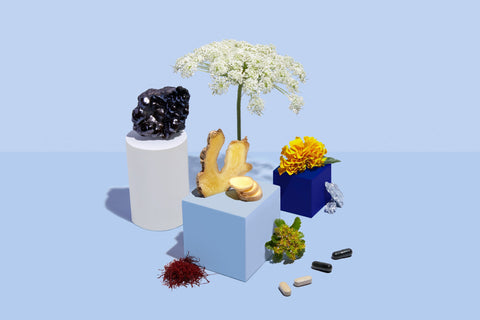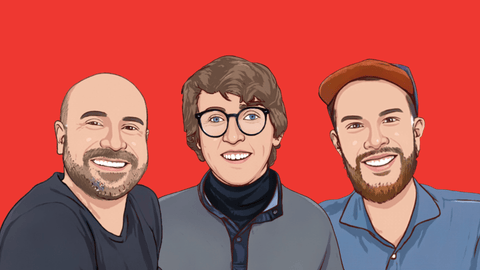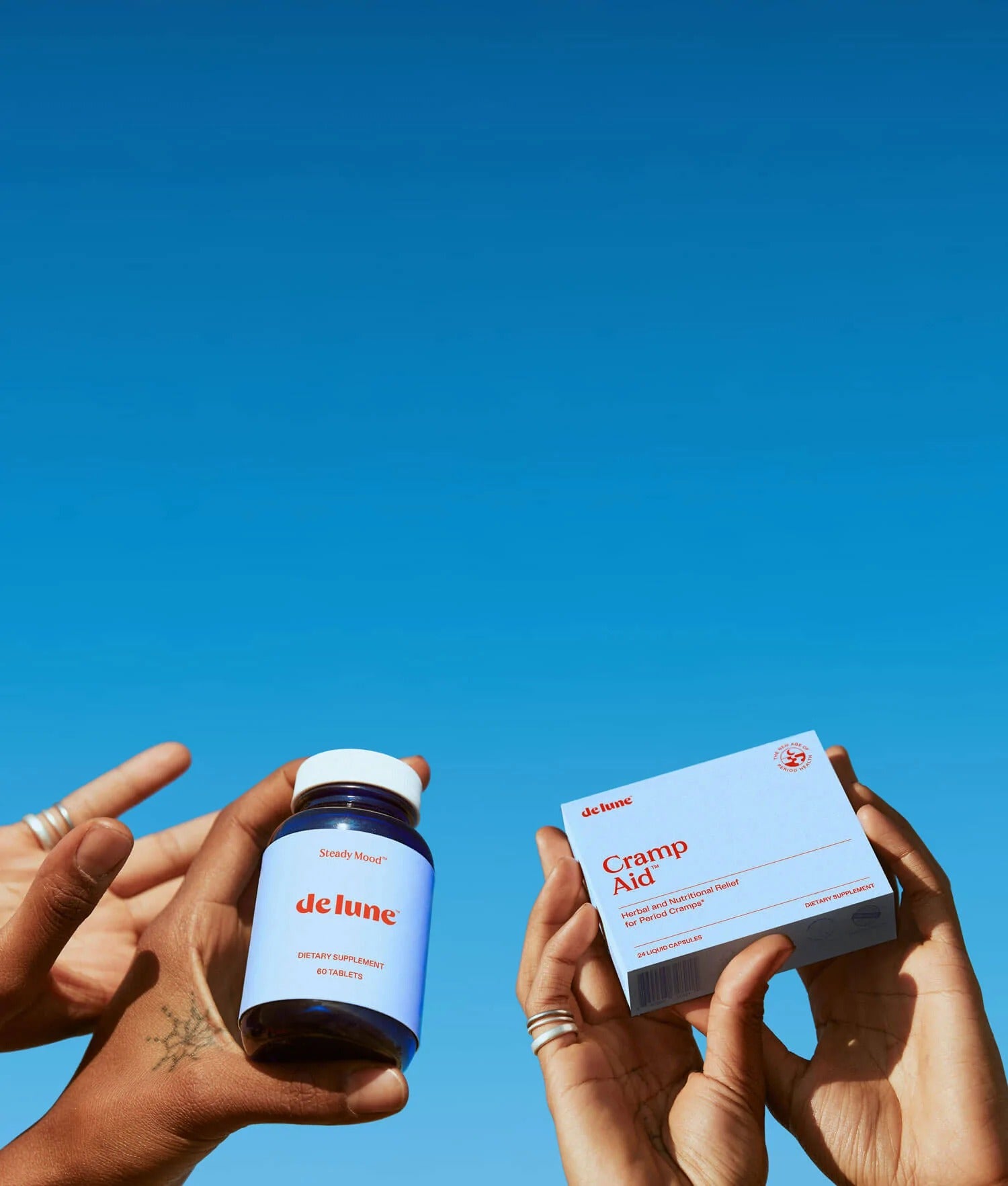It’s not uncommon for period cramps to differ in severity from month to month.
Understanding why your cramps got so much worse all of a sudden is a matter of understanding what’s normal for you.
- If your cramps are severe and suddenly much worse than your typical cramps, or if severe pain lasts more than a few days, tell your healthcare provider. These could be signs of endometriosis or adenomyosis—health conditions that affect about 1 in 10 women of reproductive age, and can develop later in adulthood. (1)
- If your cramps are suddenly worse than usual but still within a normal range for you, this article explains possible reasons why.
Why your cramps are worse some months but not others
Periods are sometimes called the “fifth vital sign” because they’re an expression of someone’s underlying health status. When your period is painful or difficult, it’s trying to tell you your system has been thrown.
You may only think about your menstrual cycle during your period, but it’s happening all the time. The hormones that drive the ebbs and flows of your cycle are sensitive to what’s going on elsewhere in your body, all month long.
Every day is an opportunity to support your cycle with healthy habits. Some periods come with worse cramps than others because your period is like a scorecard that reflects how supportive your habits were over time.
Habits that support cycle health and promote easy periods include:
- Choosing a healthy diet rich in anti-inflammatory, plant-based foods (2)
- Supplementing with nutrients and herbs that are important to cycle health (3, 4, 5)
- Getting at least 7 hours of quality sleep each night (6)
- Relieving stress (7)
- Physical activity (8)
- Quitting cigarettes (9)

“Why are my cramps so bad randomly?”
It might feel like bad period cramps come out of nowhere sometimes, but randomness seldom has anything to do with it. Here are four reasons why your cramps may suddenly be worse than usual.
1. You overdid it on caffeine, salt, or alcohol before or during your period
Caffeine, salt, and alcohol can act as vasoconstrictors—substances that narrow blood vessels so less blood and oxygen can flow through them.
Period cramps happen in a 3-step process. Keeping oxygen flowing freely through the blood vessels in your uterus is critical to preventing them.
- Hormonal fluxes around the start of your period trigger the production of prostaglandins—pro-inflammatory compounds that accumulate in the uterus, tighten uterine muscles, and help detach the uterine lining so it can leave as your period.
- When prostaglandins are overproduced, they cause the uterine muscles to over-tighten, pinching off blood vessels that supply the uterus with oxygen.
- When uterine muscles don’t have enough oxygen, it hurts. That pain is a period cramp.
Uterine prostaglandins are usually most plentiful on the first day of your period, but they start to accumulate before then. Overdoing it on caffeine, salt, or alcohol in the days leading up to and during your period can further prevent oxygen from reaching your uterus, resulting in more intense cramps. (10, 11)
2. You didn’t ovulate that cycle
Ovulation is the once-a-cycle event when one of your ovaries releases an egg. While ovulation is critical to healthy menstrual cycles, our bodies may skip this process when they receive stress signals. One study found about 1 in 3 menstrual cycles are anovulatory—meaning ovulation didn’t happen. (12)
Ovulation is important because it turns on the hormone progesterone, which helps make periods easier. Estrogen is the yin to progesterone’s yang; among its many functions, estrogen thickens the uterine lining, while progesterone prevents it from becoming too thick.
You only make progesterone after you’ve ovulated. Without ovulation and progesterone, estrogen is left to thicken the uterine lining unchecked. The thicker the lining, the more cramp-causing prostaglandins that are needed to detach it. More prostaglandins mean worse cramps. (13)
Anovulatory cycles happen when something signals to your body that it’s a bad time for pregnancy. Things that can prevent ovulation include: (14, 15)
- Hormonal birth control
- An underlying health issue, like hormonal imbalance or PCOS
- Inadequate nutrition
- Physical or emotional stress
- Long-term use of ibuprofen or similar painkillers
- Gaining or losing weight quickly
- Exercising too much
- Binge drinking
3. Your body was stressed at some point in the last 3 months
Although you can’t make progesterone without ovulation, just because you ovulated doesn’t automatically mean you’ll make enough progesterone to support an easy period.
Progesterone levels are only as healthy as the tissue that produced it. Progesterone is made by the corpus luteum—an ovarian tissue that quickly forms after ovulation from the remnants of the egg that was just released.

That egg, while newly released, isn’t brand new. It’s been slowly developing inside the ovary for the past 90 days or so—about 3 months—before it was released. (16)
If the health of a growing egg cell is compromised at any point during its 90-day developmental journey, it can compromise the health of the corpus luteum it will later help form. A compromised corpus luteum makes less progesterone, which can worsen cramps and PMS.
This means that factors that damage developing egg cells can show up as bad cramps or PMS months later. These factors can include: (17, 18, 19)
- Physical or emotional stress
- Inadequate nutrition
- Lack of sleep
- Smoking cigarettes
4. You’re new to menstruating (which includes recently coming off hormonal birth control)
The hormonal rhythms that guide the menstrual cycle often need time to establish.
Most people don’t get cramps until about 6 months to a year after getting their first period. (20) Periods can remain irregular for the first 3 years as a new menstruator, with symptoms that come and go or vary in intensity from cycle to cycle.
People who recently came off hormonal birth control are also considered new menstruators. The “period” you got while on the pill wasn’t your real period; what you’re experiencing now is your natural, unsuppressed cycle. It can take several months (in some cases, years) to adjust to ovulating regularly post-pill, and periods can be erratic until you do.
How to support your cycle & relieve cramps the healthy way
De Lune products are designed to naturally relieve period cramps and PMS, while supporting overall cycle health so periods become easier over time.
Cramp Aid naturally relieves cramps at the source
Cramp Aid is fast-acting, use-as-needed relief for period cramps and discomfort. It’s nutritionist-formulated with high-potency nutrients and herbs that target every step of the period pain cascade:
- Anti-inflammatory ginger and calendula help prevent the overproduction of pro-inflammatory prostaglandins
- Antispasmodic dong quai and fenugreek help relax uterine muscles, preventing them from contracting too powerfully
- Zinc and B vitamins help boost the flow of oxygen to the uterus, preventing the cut-off of oxygen and the painful cramps that follow
Learn more about Cramp Aid here.
Steady Mood offers full-cycle support for optimal hormonal health
Your cycle needs support every day to bring you healthy, regular periods. Steady Mood is a daily multivitamin that provides the nutrition your cycle needs to thrive, all month long.
It’s made of science-backed ingredients clinically shown to help relieve PMS moods, bloating, cravings, and brain fog, while nourishing developing egg cells and preventing future symptoms.
Soothing nutrients like zinc and magnesium support healthy hormone levels, and adaptogenic herbs like rhodiola help the body cope with stress that can prevent ovulation.
Learn more about Steady Mood here.

References
1. https://www.hopkinsmedicine.org/health/conditions-and-diseases/endometriosis
2. Barnard, N. D., Scialli, A. R., Hurlock, D., & Bertron, P. (2000). Diet and sex-hormone binding globulin, dysmenorrhea, and premenstrual symptoms. Obstetrics & Gynecology, 95(2), 245-250.
3. Posaci, C., Erten, O., Üren, A., & Acar, B. (1994). Plasma copper, zinc and magnesium levels in patients with premenstrual tension syndrome. Acta obstetricia et gynecologica Scandinavica, 73(6), 452-455.
4. Ozgoli, G., Goli, M., & Moattar, F. (2009). Comparison of effects of ginger, mefenamic acid, and ibuprofen on pain in women with primary dysmenorrhea. The journal of alternative and complementary medicine, 15(2), 129-132.
5. Zekavat, O. R., Karimi, M. Y., Amanat, A., & Alipour, F. (2015). A randomised controlled trial of oral zinc sulphate for primary dysmenorrhoea in adolescent females. Australian and New Zealand Journal of Obstetrics and Gynaecology, 55(4), 369-373.
6. https://www.sleepfoundation.org/insomnia/pms-and-insomnia
7. Wang, L., Wang, X., Wang, W., Chen, C., Ronnennberg, A. G., Guang, W., ... & Xu, X. (2004). Stress and dysmenorrhoea: a population based prospective study. Occupational and Environmental Medicine, 61(12), 1021-1026.
8. Rakhshaee, Z. (2011). Effect of three yoga poses (cobra, cat and fish poses) in women with primary dysmenorrhea: a randomized clinical trial. Journal of pediatric and adolescent gynecology, 24(4), 192-196.
9. Hornsby, P. P., Wilcox, A. J., & Weinberg, C. R. (1998). Cigarette smoking and disturbance of menstrual function. Epidemiology, 193-198.
10. Faramarzi, M., & Salmalian, H. (2014). Association of psychologic and nonpsychologic factors with primary dysmenorrhea. Iranian Red Crescent Medical Journal, 16(8).
11. Parazzini, F., Tozzi, L., Mezzopane, R., Luchini, L., Marchini, M., & Fedele, L. (1994). Cigarette smoking, alcohol consumption, and risk of primary dysmenorrhea. Epidemiology, 469-472.
12. Prior, J. C., Naess, M., Langhammer, A., & Forsmo, S. (2015). Ovulation prevalence in women with spontaneous normal-length menstrual cycles–a population-based cohort from HUNT3, Norway. PLoS One, 10(8), e0134473.
13. Dawood, M. Y. (1987). Dysmenorrhea and prostaglandins. In Gynecologic endocrinology (pp. 405-421). Springer, Boston, MA.
14. https://www.nhs.uk/conditions/infertility/causes/
15. Sharma, R., Biedenharn, K. R., Fedor, J. M., & Agarwal, A. (2013). Lifestyle factors and reproductive health: taking control of your fertility. Reproductive biology and endocrinology, 11(1), 1-15.
16. Williams CJ, Erickson GF. Morphology and Physiology of the Ovary. [Updated 2012 Jan 30]. In: Feingold KR, Anawalt B, Boyce A, et al., editors. Endotext [Internet]. South Dartmouth (MA): MDText.com, Inc.; 2000-. Figure 1, [The timetable of normal folliculogenesis...].
17. Mahoney, M. M. (2010). Shift work, jet lag, and female reproduction. International journal of endocrinology, 2010.
18. Kalantaridou, S. N., Makrigiannakis, A., Zoumakis, E., & Chrousos, G. P. (2004). Stress and the female reproductive system. Journal of reproductive immunology, 62(1-2), 61-68.
19. Windham, G. C., Elkin, E. P., Swan, S. H., Waller, K. O., & Fenster, L. (1999). Cigarette smoking and effects on menstrual function. Obstetrics & Gynecology, 93(1), 59-65.
20. Proctor, M., & Murphy, P. A. (2001). Herbal and dietary therapies for primary and secondary dysmenorrhoea. Cochrane Database of Systematic Reviews, (2).







